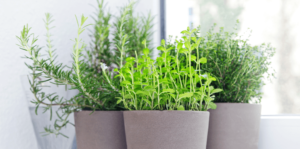Learning how to plant herbs at home is easy, and if you start soon, you can have a delicious assortment of culinary herbs ready in time for Thanksgiving dinner! Indoors or outdoors, cultivating these fragrant edible plants is a breeze, and you’ll absolutely love what they bring to your cooking. Plus, Thanksgiving is all about celebrating the harvest, so what better way to make your holiday meal a hit than by trimming it with mouthwatering, aromatic herbs from your very own garden!
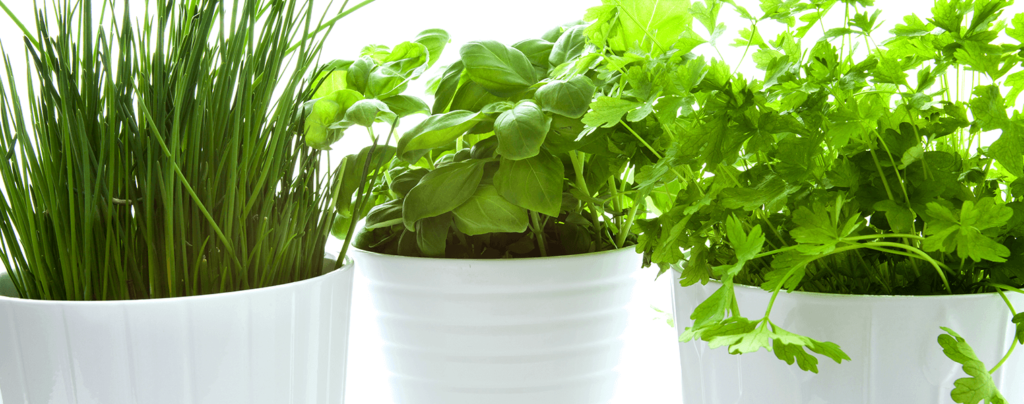
How to Grow a Herb Garden at Home
While some herbs are fast growers, others take a while to germinate, so if you want to plant herbs in time for a Thanksgiving harvest, buying a starter plant is the best idea. Allow your newly transplanted herb plant to settle into its new home for a few weeks, and once it has a noticeable growth spurt, you can start grazing on those leaves.
If you’re going to plant herbs indoors, get some containers with good drainage holes to ensure that water doesn’t collect in the bottom of the pot. Lots of our favorite culinary herbs are quite sensitive to wet feet, but still appreciate frequent watering. Find a sunny window, and place your plant nearby depending on its specific lights needs. If it’s a variety that prefers bright, indirect light, then you’ll want to place it a few feet off to the side, whereas if it prefers direct sun, you should put it right by the windowsill.
If you’re planting outside, you have the option of growing herbs in containers or in your garden bed. With containers, it’s easy to manage the size of your plants–some are aggressive growers and may spread through your garden faster than anticipated. While this can certainly be managed with some regular pruning, container-grown herbs will be a little more low-maintenance.
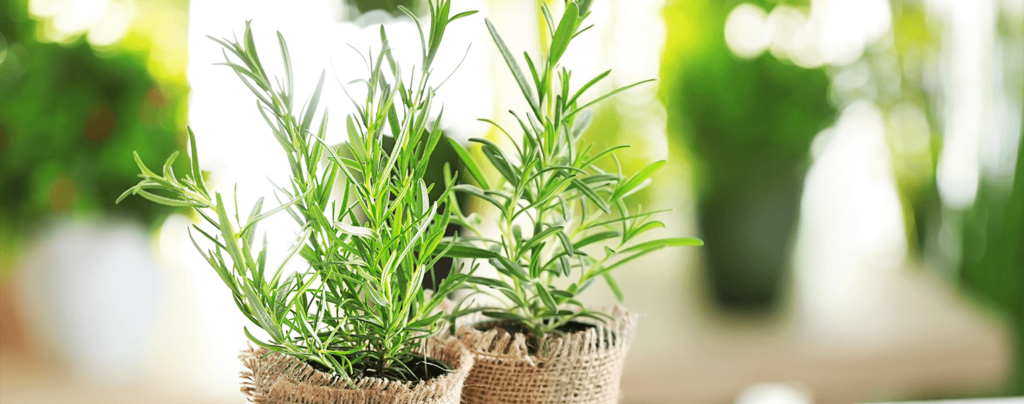
5 Herbs to Plant Now in Time for Thanksgiving
Grab these starter herb plants from Living Color Garden this October, and enjoy all the creative ways you can use them in the kitchen! The most savory, comforting meals always have a good blend of aromatic spices, and these grown garden favorites will definitely amp up the flavor for your Thanksgiving feast.
Rosemary
Rosemary is one of the most popular poultry spices, bringing that nostalgic scent and earthy quality that pairs just as well with salty flavors as it does with sweet. This evergreen herb has needle-like leaves, almost like a mini pine tree. In containers, it has the cute appearance of a mini conifer, but in the Florida landscape, you can actually grow it as a perennial shrub! At maturity, they can grow up to four feet wide and tall, so this means you’ll have a massive supply of edible herbs all year long.
In addition to roasting the Thanksgiving bird with a generous bunch of rosemary sprigs, try making this simple holiday dip: spread one can of cranberry sauce across a pyrex dish, then flatten one brick of cream cheese by hand and layer it on top. Layer on one can of rinsed black beans and ¼ cup of minced onion. Top it off with shredded mozzarella and several sprigs of rosemary. Bake it at 350°F until it’s brown and bubbly, then peel the rosemary sprigs off the top and set aside. Serve with pita chips! You’ll be amazed at how well the flavors mingle together.
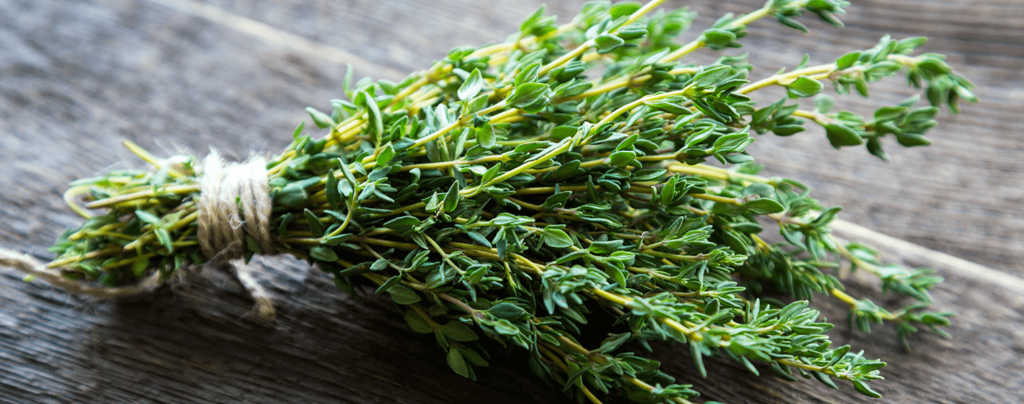
Thyme
Thyme and rosemary make a pretty great team, so we always recommend growing both so you can enjoy them together in your roasted poultry dishes. Thyme is a fast-growing, sun-loving plant that is surprisingly drought tolerant, so feel free to allow the soil to dry out between watering. It makes a gorgeous border plant, and its flowers draw in bees and butterflies like a magnet, but you may want to prune it frequently to avoid it from invading the space of neighboring plants.
For an easy herb turkey rub, mix 4 teaspoons each of chopped thyme, chopped rosemary, minced garlic, and minced onion. Add ¼ cup of white wine Worcestershire sauce, ½ teaspoon of black pepper, 2 teaspoons of coarse salt, ¼ cup of olive oil, and a squeeze of lemon juice. Lemon adds the perfect zip that brings out thyme’s complex flavor.
Dill
This delicate herb has a fabulous tang that makes it ideal for pickling, but it really pairs splendidly with root vegetables. Buttery carrots with a sprinkle of dill and sea salt, or garlic mashed potatoes blended with sour cream and fresh dill make lovely side dishes for a Thanksgiving turkey. While it grows quite fast, you’ll want to avoid planting it in direct sunlight, because it tends to bolt from super hot weather. This means that it will produce flowers instead of the tasty leaves we want for our cooking, so if you notice any flowers popping up, try to pluck them out quickly so your plant can get back to growing greens!
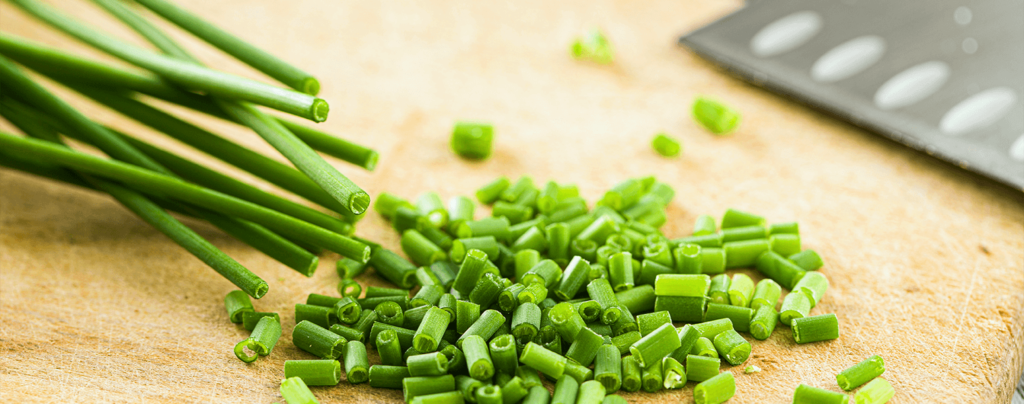
Chives
For a mild, onion-y kick that isn’t too overpowering (and won’t result in onion breath), we love the herbaceous flavor of fresh chives! While they’re pretty fast to grow and can often be harvested as soon as two months after sowing seed, you can harvest them in under a month if you buy a starter plant. It can grow in direct sun or partial shade and prefers moist soil with lots of nutrients and organic matter.
Chives make a great topping for all sorts of dishes, so we like using it as a garnish and keeping a small bowl on the table with minced chives for sprinkling. Of course, sour cream and chives make an amazing topping for baked potatoes; we also really enjoy making cheddar cheese and chive sauce to pour over steamed broccoli.
Sage
This evergreen herb is absolutely bursting with flavor—only a tiny bit is needed at a time—so you’re unlikely to run out of your sage supply if you grow it yourself! While it can be used in poultry seasoning, we especially like it when it’s fried up in a brown butter sauce with minced walnuts to drizzle over roasted squash. Sage and squash are a match made in heaven, so if you’ve got any squashes from the garden that will be ready to eat by the end of November, plant some sage now, so you can double down on the garden-fresh goodness.
Visit Living Color to pick up all the starter herbs you need to grow your own living spice rack! You’ll love learning how to grow herbs and combine them to create unique flavor profiles—it’s a chance to brush up on your gardening skills as well as your cooking skills at the same time! Plus, your family will surely enjoy the difference it makes in all your upcoming holiday meals. If you’d like to arrange for home delivery or curbside pickup if you don’t feel like coming in the store, feel free to give us a call at the shop, and we’ll gladly make arrangements.

